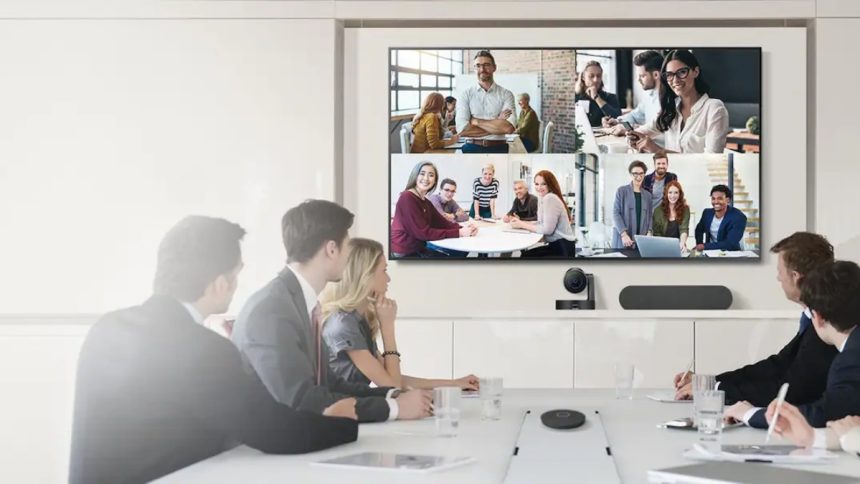Staying connected with your team, clients, and partners is paramount. The right audio-video conferencing solutionsnot only bridge the physical gaps between us but also pave the way for more dynamic, engaging, and productive interactions. With a plethora of options available, making an informed choice is key to unlocking seamless communication.
1. Assess Your Needs
The first step in choosing an audio-video conferencing solution is a thorough assessment of your communication requirements. Consider the nature of your meetings: Are they large or small, formal or informal, daily stand-ups or occasional check-ins? Also, think about the need for features such as virtual backgrounds, integration with collaboration tools, real-time translation, and accessibility options. Understanding the specific demands of your business will guide you towards a solution that complements your workflow, rather than complicates it.
2. Look for High-Quality Audio and Video
The essence of effective remote communication lies in clear audio and sharp video. Solutions that offer noise cancellation, high-definition video, and wide-angle cameras can significantly enhance the clarity and quality of your meetings. Conducting tests or trials to evaluate these aspects in real-world scenarios is crucial. After all, your team’s ability to communicate without hindrances directly impacts the success of your remote interactions.
3. Ease of Use
A powerful tool is only as good as its usability. The ideal conferencing solution should be user-friendly, requiring minimal technical know-how to operate. This includes easy installation, quick setup, and a straightforward interface. A solution that can be effortlessly adopted by your team reduces onboarding time and eliminates the barriers to effective communication.
4. Compatibility and Integration
The ability of your conferencing solution to play well with other tools is vital. It should seamlessly integrate with your calendar systems, email, project management tools, and any specialized software your team uses. This interoperability ensures that your team can remain in their workflow hub without constantly switching between apps, fostering a more streamlined and productive working environment.
5. Security and Privacy
With the increasing frequency of cyber threats, the security of your conferencing solution is non-negotiable. Features such as end-to-end encryption, secure guest access, and control over data storage and sharing should be top priorities. Additionally, understanding the provider’s compliance with global privacy regulations can safeguard your business against legal and reputational risks.
6. Reliable Customer Support
Access to dependable customer support can drastically improve your experience with a conferencing solution. Whether it’s troubleshooting, navigating new features, or addressing security concerns, the availability of expert assistance when you need it ensures your operations run smoothly. Look for providers that offer comprehensive support through various channels, including live chat, email, and phone, around the clock.
Making the Most of Your Conferencing Tools
Adopting a new conferencing solution is just the beginning. Encouraging your team to explore and utilize its full range of features can transform the way you communicate. From recording important sessions for later review to engaging in interactive whiteboarding sessions, the potential uses extend far beyond mere face-to-face meetings. This holistic adoption not only enhances your team’s collaboration but also builds a more connected and vibrant remote work culture.
The Impact of a Robust Conferencing System on Team Dynamics
A robust conferencing system does more than facilitate meetings; it transforms team dynamics by fostering a culture of open communication and collaboration. In an environment where every team member—regardless of their location—can easily contribute to discussions, share ideas, and provide feedback, you cultivate a sense of inclusivity and belonging. This not only enhances the quality of teamwork but also boosts morale and drives innovation. By choosing a conferencing solution that accommodates diverse communication styles and needs, you lay the groundwork for a dynamic, engaged, and cohesive team.
Staying Ahead: Keeping Your Conferencing System Updated
Staying up-to-date is crucial for maintaining an efficient and secure conferencing system. Regular updates not only bring new features and improvements but also address security vulnerabilities and bugs. Encouraging your IT team to schedule updates during off-peak hours minimizes disruptions and ensures your system is always running smoothly. Additionally, keeping abreast of the latest trends and advancements in conferencing technology can position your business as a forward-thinking, tech-savvy leader, ready to adapt to the changing needs of the digital workplace.
Leveraging Analytics for Continuous Improvement
Analytics play a crucial role in enhancing the effectiveness of your audio-video conferencing tools. Many sophisticated conferencing solutions offer analytics features that allow you to track usage patterns, participant engagement, and even the quality of audio and video. By analyzing this data, you can identify areas for improvement, whether it’s upgrading your network infrastructure to prevent lag and dropouts or adjusting meeting formats to increase participation. Regularly reviewing these insights helps ensure that your conferencing system evolves in line with your team’s needs, leading to more productive and engaging meetings.
Enhancing Engagement with Interactive Features
One of the keys to successful remote meetings is keeping participants engaged. Modern conferencing solutions offer a range of interactive features, such as live polls, Q&A sessions, and breakout rooms, which can transform passive listeners into active participants. Utilizing these features can make meetings more dynamic and inclusive, ensuring that everyone has the opportunity to contribute. Furthermore, interactive elements can facilitate brainstorming sessions, foster team building, and even simulate the experience of in-person workshops. By incorporating these tools into your meetings, you create a more engaging and collaborative environment that maximizes the benefits of your conferencing system.
Conclusion
Choosing the right audio-video conferencing solutions is a strategic decision that affects every aspect of your business communications. By meticulously assessing your needs, prioritizing audio and video quality, insisting on user-friendliness, ensuring compatibility and security, and demanding reliable support, you can create a conducive environment for clear, effective, and engaging communications.
For businesses ready to elevate their communication strategy, reaching out to experts in the field can make all the difference. Embrace a solution that offers not just connectivity, but also the clarity, compatibility, and security your business deserves. Transform your communications landscape and empower your team to connect and collaborate more effectively than ever before.
Lynn Martelli is an editor at Readability. She received her MFA in Creative Writing from Antioch University and has worked as an editor for over 10 years. Lynn has edited a wide variety of books, including fiction, non-fiction, memoirs, and more. In her free time, Lynn enjoys reading, writing, and spending time with her family and friends.















